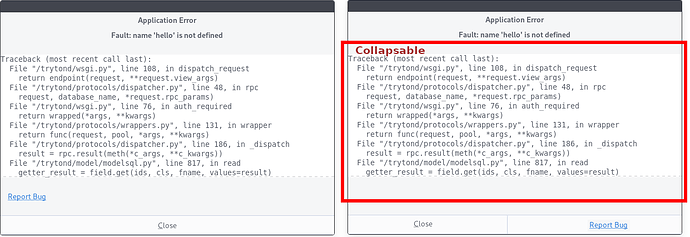I deliberately created an bug and looked a bit at the dialog. I think making a small change is a good compromise.
- Make the traceback default collapsed
- Change the
report buglink to a button and put it near theclosebutton - Eventually add the word ‘BUG’ somewhere in the popup, so the user know that trying again don’t make any difference.
I don’t think adding error codes makes any sense. Also the
Fault message is self-explanatory. And when such message pops up at a demo, as the demonstrator you directly blame the developers that they messed things up and you can’t show the situation now.
